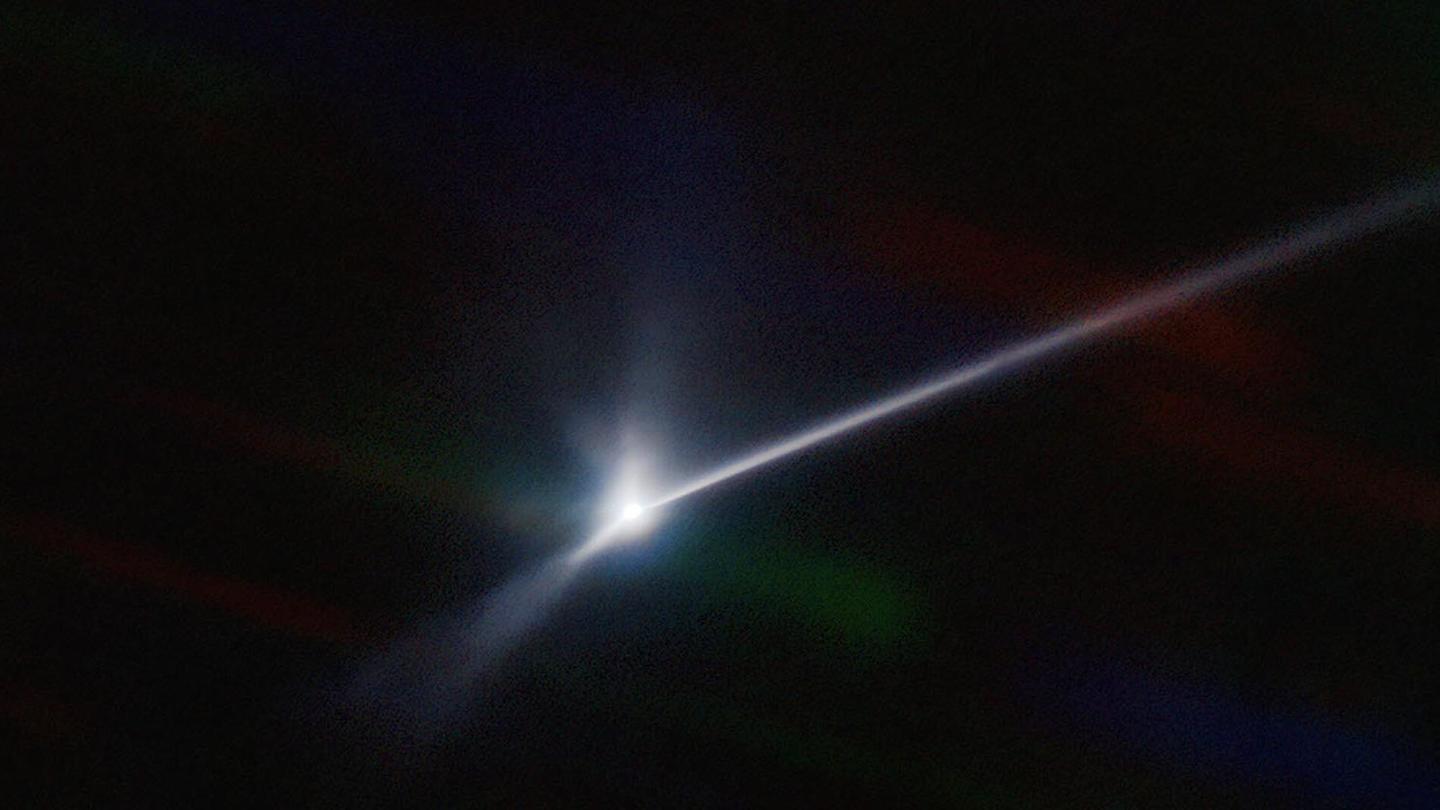
Asteroid deflected by NASA's DART spacecraft leaves 10,000km trail
What's the story
A week ago, NASA deliberately crashed a $324.5 million DART spacecraft into the Dimorphos asteroid to alter its trajectory.
Though the success of this experiment is yet to be determined, the Southern Astrophysical Research (SOAR) telescope in Chile has captured a remarkable picture showing a comet-like plume spreading behind the giant asteroid.
The plume is essentially a trail of debris that stretches over 10,000km.
Context
Why does this story matter?
The planetary defense test conducted by NASA is the first of its kind. Scientists are ecstatic about achieving this feat which was once unimaginable.
Irrespective of the pending result, it's evident that we can combat asteroid attacks in the future.
Nevertheless, further probing is required to provide insight into the nature of the asteroid and its residues.
Information
The dust trail will eventually diffuse
The comet-like tail stretches up to 10,000km and does not stop there. The track will grow longer until the dust and remnant matter from the crash have gradually dispersed. Ultimately, the particles would be afloat in space.
Result
The orbital path of the asteroid is expected to change
The impact of the crash test can be evaluated by observing the trajectory of Dimorphos.
To recall, Dimorphos is a moonlet revolving around a large asteroid called Didymos. If the collision with the DART spacecraft has accomplished its purpose, then there will be a shift in the orbital path of Dimorphos.
It also implies that the asteroid will steer clear of Earth.
Monitoring
What's the next step in the DART mission?
"Now begins the next phase of work for the DART team as they analyze their data and observations by our team and other observers around the world who shared in studying this exciting event," said Matthew Knight from the US Naval Academy.
He further added that the trail of debris will be regularly monitored over the next few weeks and months.